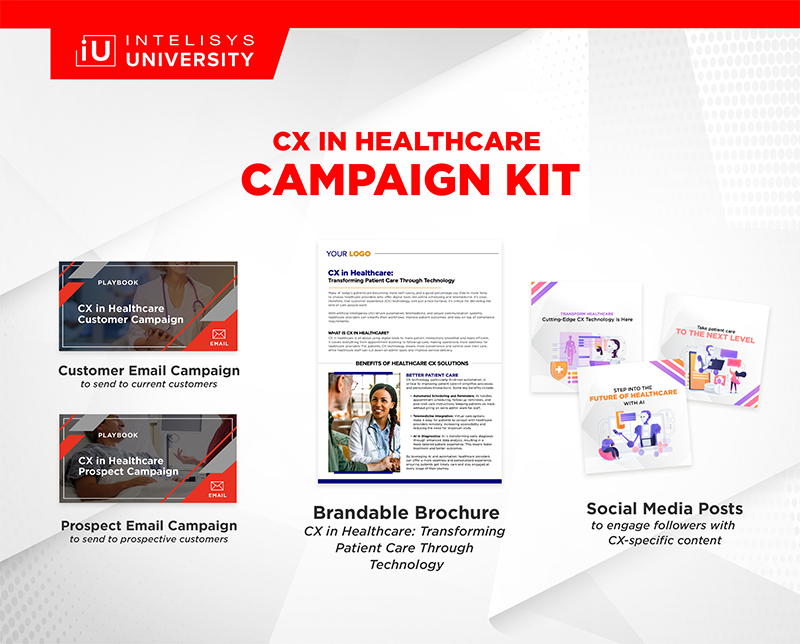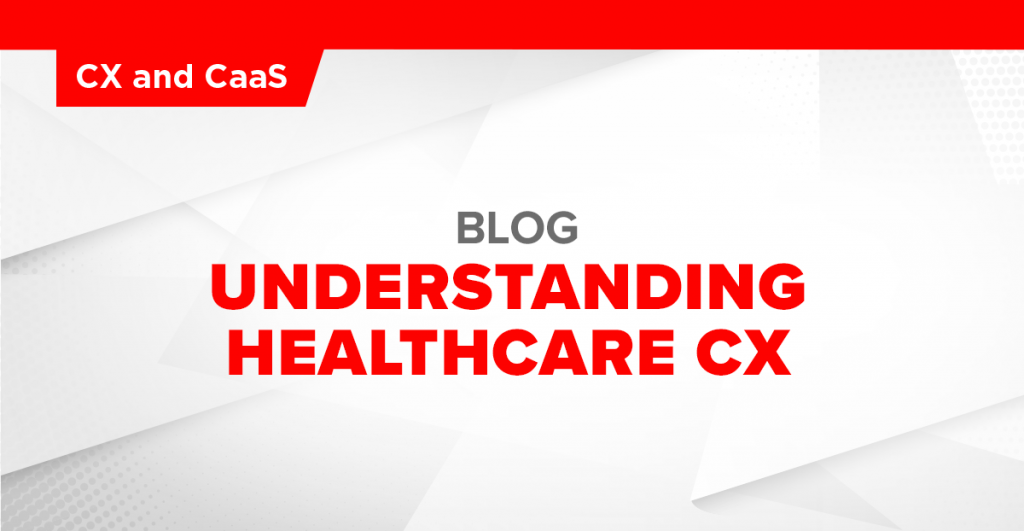
Up to 70% of patients now prefer to self-schedule, and over 40% of patients search for services after business hours. These figures simply show that tech-based engagement is fast becoming the norm.
With AI, automation, and telemedicine steadily gaining traction, healthcare is transforming. And this shift presents a real opportunity for healthcare organizations to offer tech-driven solutions that make the patient journey more efficient, personalized, and connected.
Healthcare Customer Experience (CX): Key Terms to Understand
You don’t have to be a healthcare expert to succeed as a healthcare CX partner, but knowing essential terminology demonstrates that you understand what matters to your clients—and that can make a huge difference.
Patient Journey
The patient journey refers to the entire experience a patient goes through when interacting with healthcare providers. It begins when the patient first seeks care, such as scheduling an appointment or researching symptoms, and continues through their diagnosis, treatment, and post-care follow-up.
The journey includes every touchpoint, like check-ins, consultations, treatments, billing, and follow-up care.
Healthcare CX solutions play a vital role in enhancing each stage of this journey, helping to create smoother, more personalized experiences. Here are some examples:
Pre-visit
- Appointment scheduling through online portals or self-scheduling options like mobile apps, AI chatbots, or third-party scheduling tools makes it easier for patients to find convenient times.
- Automated appointment reminders via text or email reduce no-shows and keep patients engaged even before their visit.
During the visit
- Check-in solutions like digital kiosks or mobile apps can make visits more efficient for both patients and staff.
- Patient portals allow for easy access to medical records and other important patient information.
Post-visit
- Automated surveys and feedback requests can allow healthcare providers to quickly respond to concerns.
- A patient engagement platform can seamlessly provide post-visit communication like prescription reminders and care instructions.
- Telehealth options like virtual appointments can enable follow-up care without the patient coming in for visits.
Ongoing care
- For patients dealing with chronic conditions or long-term treatments, regular updates, medication reminders, and health tips—delivered through apps or email—can help them stay on top of their care. Plus, constant communication with their healthcare provider can make them feel more supported throughout their healthcare journey.
HIPAA Compliance
Healthcare providers must follow the rules set by the Health Insurance Portability and Accountability Act (HIPAA), so any CX solution you offer needs to protect patient data, whether it’s being transmitted or stored.
A critical issue that often flies under the radar is that SMS communication can be a gray area for HIPAA compliance. While it’s a convenient channel of communication, there’s always the risk of privacy issues—patients may not be the only ones reading the messages.
Providing secure alternatives can help ensure your healthcare clients are always on the right side of the law. Here are some examples:
- Messaging apps like TigerConnect and OhMD
- Patient portals like Epic’s MyChart
- Telehealth platforms like Zoom for Healthcare and Doxy.me
- Encrypted email services like Virtru and Paubox
EHR Integration
Electronic Health Records (EHR) integration involves connecting different systems, like CX platforms or telehealth services, with the healthcare provider’s EHR system. This allows patient information—like medical history, medications, and treatment plans—to be accessed and shared across various tools in real time, simplifying communication and care delivery across the patient journey.
For example, with EHR integration, when a patient schedules an appointment through a telehealth platform, their medical history, medications, and recent lab results are automatically available to the provider. This seamless connection between systems allows the provider to deliver more informed, personalized care without needing to manually access multiple databases.
The result? Improved patient experience while also lightening administrative load, making day-to-day operations run more smoothly.
2024 Healthcare CX Trends: What Shaped the Patient Experience This Year
As healthcare continues to evolve, several key trends are shaping the future of CX, and aligning your offerings with these trends means staying ahead of the curve. When you provide more relevant and innovative solutions, you enhance your value to both existing and prospective healthcare clients.
Here’s what’s hot in healthcare for 2024:
AI and Machine Learning in Healthcare
AI is taking over routine tasks like scheduling appointments and even diagnosing medical conditions. One of the most impressive uses of AI currently is AI-powered image detection, where AI can analyze mammograms and spot early signs of breast cancer with remarkable accuracy.
Predictive analytics is another, where AI analyzes vast amounts of data to predict potential health issues before they become critical. And of course, there are AI-driven virtual assistants that can provide 24/7 support.
Telemedicine and Virtual Healthcare
Telemedicine took off during the pandemic, and it’s not going anywhere. Patients appreciate the convenience of virtual visits, while healthcare providers benefit from seeing more patients in less time.
Also, telemedicine reduces the hassle of travel—and hence, no-shows—making it easier for providers to manage appointments and follow-up care.
Contact Center Solutions for Small Healthcare Practices
Not every healthcare provider needs a full-scale contact center. Many smaller practices are turning to “contact center lite” solutions that provide essential features like call routing and automated reminders—but without the complexity.
This presents an excellent opportunity for sales partners to cross-sell. Many smaller clients may not even realize they need these features until you demonstrate how these tools can streamline their operations and improve efficiency.
Automation
Automation is becoming increasingly important in healthcare. By automating tasks like scheduling, billing reminders, and follow-up care, healthcare providers can deliver timely information to clients while reducing the burden on staff.
Healthcare CX Integration
Automation is only part of the equation. Healthcare providers also need systems that work seamlessly together to avoid the frustration of disconnected tools and platforms.
Offering CX solutions that integrate smoothly with existing EHR systems improves workflow efficiency and minimizes stress for everyone involved.
Personalized Patient Interactions
Today’s patients expect more personalized communication, whether it’s an appointment reminder, a follow-up message, or health tips tailored to their needs.
AI-powered CX solutions enable healthcare providers to tailor experiences, boost patient satisfaction, and enhance quality of care.
Self-Service Solutions
In addition to personalized communication, patients want more control over their healthcare. Self-service options, such as online portals for booking appointments or requesting prescription refills, empower patients to manage their care independently while providing the convenience they expect.
Taking Action: How to Drive Results with Healthcare CX
According to Intelisys sales partner Kevin Johnson of Symplicity Communications, sales partners can expand their offerings by building on existing client relationships.
For example, if you’ve helped a healthcare client set up their tech stack, why not suggest telemedicine solutions or upgrades to their security features to ensure HIPAA compliance?
Identifying “low-hanging fruits” is another effective strategy. Many healthcare providers are still stuck with outdated on-premise systems. Offering cloud-based alternatives allows you to help them stay current and relevant, positioning you as a trusted advisor.
Ready to help your clients get the most out of healthcare CX solutions? To recap, here’s how to make an impact:
- Introduce automation and AI solutions: Automation can streamline scheduling, billing, and diagnostics, reducing staff workload and improving care. AI in diagnostics is transforming early diagnosis through enhanced data analysis, resulting in a more tailored experience, faster treatment, and better outcomes.
- Focus on HIPAA-compliant communication tools: Secure messaging platforms that meet HIPAA standards protect patient data, build trust, and prevent costly compliance issues, ensuring patient privacy is maintained.
- Look for cross-selling opportunities: Tools like telemedicine and “contact center lite” improve patient access and streamline workflows, helping healthcare providers boost satisfaction and prepare for future growth.
Healthcare CX is always changing, so staying current on the latest trends and tech is essential. To learn more about how to effectively sell, head over to Intelisys University. It’s packed with tips on cross-selling, entry point questions, and strategies for success.
CX in Healthcare Campaign Kit:
- Download the CX in Healthcare Campaign Kit


